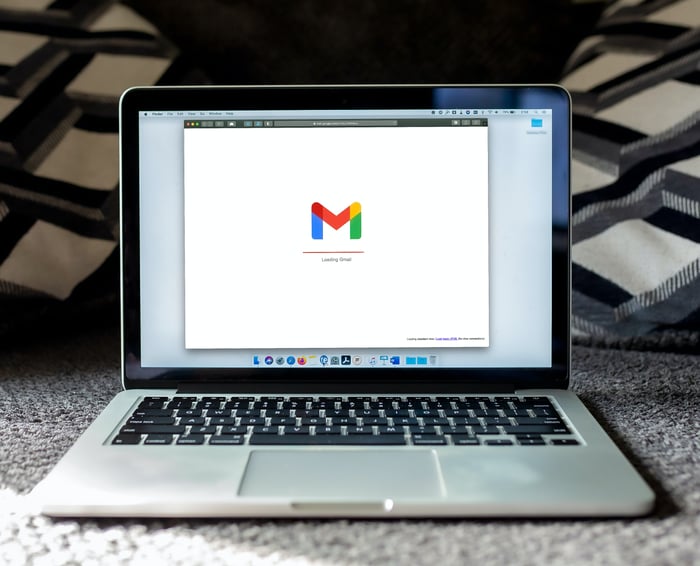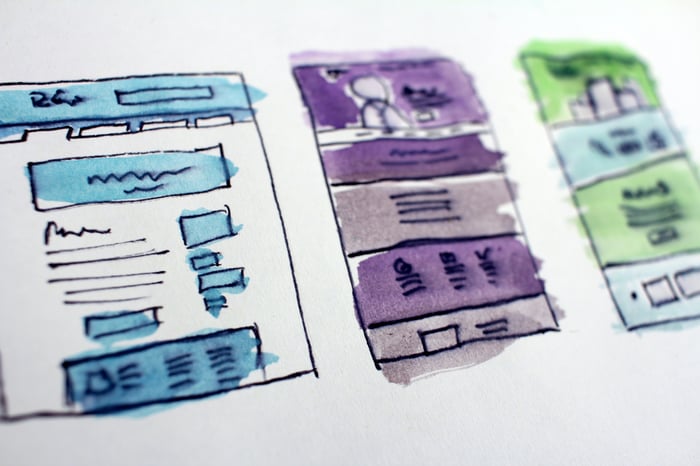Contents
Types of digital marketing
Digital marketing for B2B and B2C businesses
Benefits of digital marketing
Setting a goal and determining your budget
Digital marketing and Google Shopping
In a broad sense, digital marketing refers to any online marketing campaign and includes popular methods such as email marketing, PPC campaigns, social media marketing and content creation. Digital marketing at its core uses electronic devices to convey promotional messages, usually in the form of social media posts, display ads, or online videos, and can then be measured for effectiveness.
This method of marketing is far more cost-efficient when compared to traditional marketing: newspaper ads and television spots are typically more expensive and do not provide information on whether your ad was even viewed by your audience in the first place. Digital marketing will help your company know which methods are working best for your business, and you will receive accurate data on views and interactions with your chosen method(s), letting you change your strategy to suit.
Digital marketing encompasses a wide range of different strategies that you can use to amplify your company’s reach and, in turn, increase your ROI. Depending on your target demographic, different strategies will be more or less successful for you.
Pay-per-click (PPC) advertising is a type of digital marketing that involves paying for every user who clicks on your ad. One example of this is Google Shopping, a popular service that involves paying Google for every click on your ad. There are still some barriers to ensuring your ad is served in the first place. Google determines this using factors like the quality of the ad, the relevancy of the keywords, and the maximum bid value you’re willing to pay.
PPC campaigns usually lead a viewer to complete an action, which may be a transactional one but could also be signing up for a newsletter. This is a cheap and effective way of getting conversions.
Learn more about PPC marketing
These campaigns can be managed manually, in-house, or by an agency. There is also the option to have it managed using a technology platform, like Bidnamic's technology.
Search engine optimization (SEO) helps your business show up in search engine results pages (SERPs), and using relevant keywords in content will help your website rank higher, maximizing your visibility. SEO is a great way to gain organic traffic as you won’t be paying for each click but requires time and effort to create engaging content.
The quality of your content is key to attracting traffic, as well as factors such as mobile-friendliness: 60% of internet users are accessing from a mobile device, so keep in mind that the majority of potential customers will be viewing your ad from a device, so formatting is important.
Social media marketing is another free way to gain organic traffic for your business. Posting on social media platforms helps to increase your brand visibility and will strengthen the connection your audience has with your brand, leading to more conversions.
Social media platforms offer built-in engagement statistics, letting you know how well you are reaching your audience, and which interactions are the most successful for your business. You can then change your strategy to focus on the most profitable interactions, such as shares or total clicks to your website.
Some social media platforms also offer paid advertisements. One example of this would be Facebook Ads - you can explore how these compare to Google Ads here.
Content marketing has the goal of attracting leads that will convert into sales and customers by providing free written material. SEO is a key factor to this strategy, as ranking highly in SERPs is critical to getting your content seen. This method covers any content assets such as eBooks, handbooks, videos, and blog posts.

Email marketing is an older but still highly effective method. Email marketing can be used to promote special deals and highlight specific content for your audience. This method involves utilizing an opt-in list, which individualizes the content to your audience. Email marketing can also be automated to schedule email campaigns to meet your customer’s needs more effectively by targeting customers at specific times and days.
Native advertising is an increasingly popular method of digital marketing and aims to be less easy to spot than typical ads, without the intention of being deceptive. This strategy offers information and/or entertainment and is typically done to make consumers feel positive about your brand.
Labeling native ads clearly as advertisements is crucial for customers to trust your brand, as without this customers may engage with content for some time before realizing they are being advertised to, leading to them feeling as if they have been lied to.
A great example of native advertising comes from Nutella: They opened a pop-up hotel for one weekend only, having users enter a competition to gain a spot. Contestants were asked to create 60-second videos explaining how Nutella makes their morning special, essentially generating user-made advertisements for the brand.

Affiliate marketing, simply put, is paying someone else to promote your products/services. An example of this would be paying an online influencer to promote your product on their social media to their followers, which brings attention to your brand that you may not have otherwise had.
After finding an affiliate to promote your product/service, it is important to provide them with materials and support for them to succeed. This may include providing a discount to customers using an affiliate link, making it far more attractive to their audience.
Digital marketing methods work well for both B2B and B2C businesses, but the methods used will differ between the two.
B2C companies will usually aim to get as much traffic to their website as possible. Consumers make quicker decisions when it comes to purchases, and they may even make a purchase the first time they go to the website. For B2B however, transactions often take a long time and require consistent efforts to reach key decision-makers and build up a level of trust.
Due to the difference in audiences between B2B and B2C businesses, keywords used for things such as SEO will be different and need to be tailored and personalized to suit the target market.
Digital marketing has wide-ranging benefits for your business. The software used for digital marketing automatically tracks the number of clicks on your ads, email open rates, direct purchases, and other critical information that you can use to improve your digital marketing strategy. The data collected on your customers is accurate and precise, making it easier than ever to produce targeted ads using language and methods that will attract your demographic.
Your best business decisions require real data. Taking advantage of the data available to you can be crucial to an effective digital marketing campaign.
Here's just a few ways you can make the most of your performance data

Growing your business’s market reach is far easier with digital marketing practices than traditional methods, as the geographic location is not a hindering factor. Ads can be broadcast online to anywhere in the world, making your base of potential customers even larger. Digital marketing manages this while still being cost-effective and enabling you to send out high-converting messages.
It is also possible to target consumers within a predetermined proximity of your brick-and-mortar store, using a reciprocating online and offline approach for things such as picking up products in-store for free.
Depending on your business, you will have a specific set of goals in mind. This could be to drive clicks and traffic, increase conversions, or perhaps you are trying to reach a certain ROI.
When determining your digital marketing budget, it is crucial to identify who you are marketing towards. Once you’ve done this, you can choose a strategy that helps you reach that specific audience who are more likely to purchase from or engage with your company.
Speaking to your sales and data departments can help you tailor your digital marketing strategy using statistics, helping you know which channels you should invest in to maximize your ROI.
Advertising on Google Shopping is an increasingly effective way of getting your products in front of customers. Google is the most used search engine, taking up 87.76% of the global search market, so having your products show on Google Shopping will get you a large number of impressions.
Google Shopping is a PPC advertising network, and the amount you bid on keywords affects where your item shows up on the carousel. The top place in the listing receives the most impressions, making it the most wanted spot. Knowing the correct amount to bid at specific times of the day, for certain geographical areas, and for relevant keywords will help you maximize the overall number of sales you can gain, but is a time-consuming task for a human to complete.
Digital marketing can be an invaluable tool for your business. With the ability to accurately track the results of your campaigns, digital marketing offers flexibility that traditional methods lack. The many types of digital marketing make it easier than ever to appeal to a wide range of demographics, putting you in the best possible position for conversions.
At Bidnamic, we use machine learning to automate bid management. This allows us to avoid bidding either too high or too low for a position in Google Shopping, meaning your product can get as many impressions as possible for the best price.
Learn more about Google Performance Max campaign types
If you’re interested in taking advantage of what we can do to maximize your Google Shopping performance, book a demo today.

